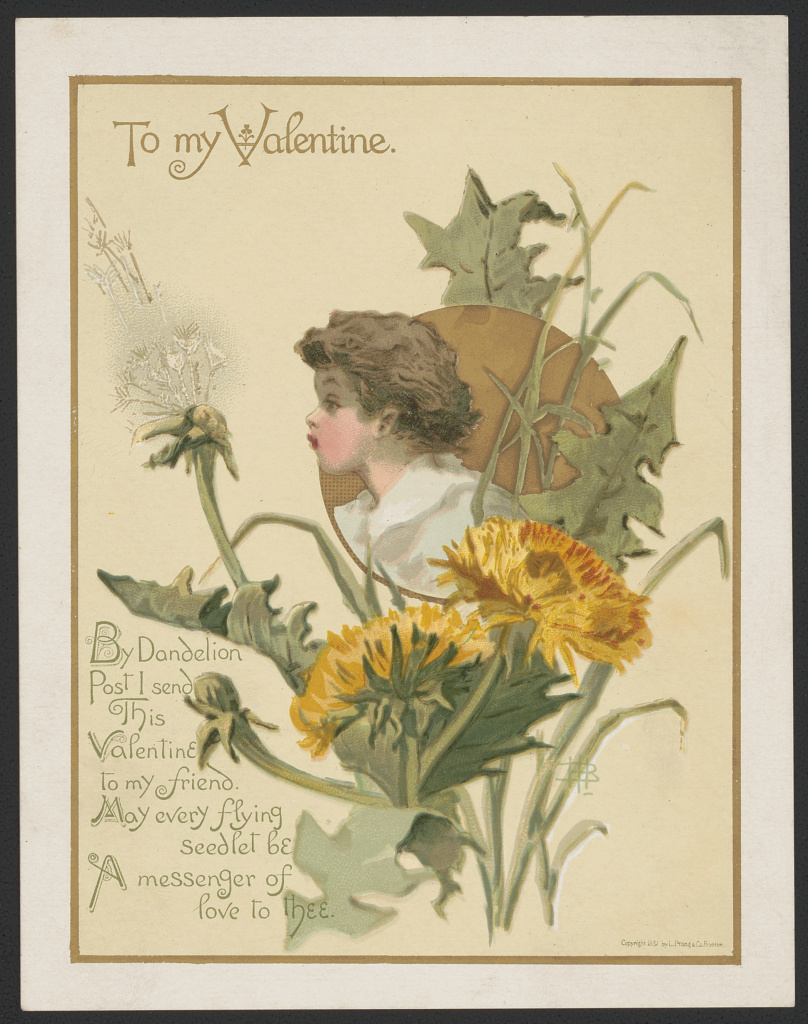The Dandelion
By Anonymous
Annotations by Rene Marzuk

O dandelion, yellow as gold,
What do you do all day?
I just wait here in the tall green grass
Till the children come to play.
O dandelion, yellow as gold,
What do you do all night?
I wait and wait till the cool dews fall
And my hear grows long and white.
And what do you do when your hair is white,
And the children come to play?
They take me up in their dimpled hands,
And blow my hair away.[1]
ANONYMOUS. “THE DANDELION,” IN STORIES FOR LITTLE CHILDREN, COMPILED BY SUSAN S. HARRIMAN, 10 [VOLUME ONE OF THE KINDERGARTEN CHILDREN’S HOUR, ED. BY LUCY WHEELOCK]. BOSTON, NEW YORK: HOUGHTON MIFFLIN COMPANY, 1920.
Contexts
Lucy Wheelock (1857-1946), the main editor of the multivolume anthology The Kindergarten Children’s Hour, was at one point the president of the International Kindergarten Union. Through her pedagogical practice, she supported the kindergarten reform in the United States and helped bridge early disagreements about how to teach 5-year-olds. She believed that kindergarten education could help tackle the cycle of poverty, a concern that remains relevant today.
The Kindergarten Children’s Hour was comprised of five illustrated volumes. Susan S. Harriman was in charge of the first one, a collection of stories and rhymes for little children. In the second, Maude C. Nash suggests home activities, while in the third Winthrop Packard turns her interactions with her own children in a series of “Talks to Children.” Following a logical progression, the fourth volume consisted of “Talks to Mothers.” In the fifth and final book, Alice Wyman anthologized songs and music for children.
Resources for Further Study
- Native to Asia and Europe, dandelions arrived in America in the seventeenth century. An article from the National Library of Medicine documents many of the uses of this perennial plant.
- Dandelions fell out of favor among home gardeners in the twentieth century as lawns in the United States became popular as status symbols. Ketzel Levine, writing for NPR, asks us to reconsider the collective dislike of the wish-granting plant.
- Check out dandelion recipes at the Old Farmer’s Almanac website!